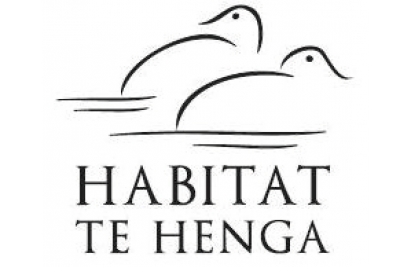Habitat Te Henga
As the end of the year approached, the Pateke at te Henga were still holding their own and week after week 17 birds were being detected, that is an 85 percent survival. Accordingly, the Pateke Recovery Group indicated that all would be on for a February release and could we please ensure that transmitters and harnesses were arranged and sent to Peacock Springs in readiness?
Again, as last year we would require 20 transmitters and harnesses while this year we would also have additional birds without transmitters and the success of this year would again be judged on the fate of the transmitter carrying birds. Expecting perhaps a total of 40 or 50 birds we were stunned to be told to expect 80!
Last year’s release took place on our Forest and Bird Matuku reserve and allowed only a brief glimpse of the Pateke as they rapidly scrambled across a couple of metres of water into dense reed beds rarely to be seen again.
Wanting a better spectacle this year and ensuring that the ducks would be released into the centre of our predator controlled area, the decision was made to renovate an old boardwalk that projected into a large pond so that most of the birds would be released here with a small number at a site offering easy access from a private property nearby.
Many days of activity followed with a couple of us clearing the old boardwalk and constructing a large deck at its far end. Pointed poles 3.6m in length were manhandled, forced through the weed mass then rammed into the muddy substrate below. Bearers, then joists were attached -often a tricky job as being without electricity, a brace and bit at or just below water level was needed. Of course, with the sea only one or two km away, all fittings had to be stainless steel to withstand possible wind driven salt exposure.
With four days to spare the deck was ready along with some under water weeding of the Eleocharis reeds done from kayaks.
Air New Zealand delivered even ahead of their ETA so we had a good start back from Mangere airport to te Henga. A large crowd was waiting and our PR representative had really done her job well with TV and newspapers both national and local all present. Volunteers helped move the boxed ducks across the river on the raft then walked them 500m to the deck where 60 birds were let go, five at a time.
Then it was all back to the more public site where after karakia and speeches, several people, old and young, had the opportunity to release a duck. My speech included a call to pass the hat around, as at this stage we still hadn’t obtained funding for the monitoring required of us- the handful of dollars received wasn’t going far but fortunately Auckland Council Biodiversity had decided to fund this aspect.
And what has happened since?
Big numbers certainly have made the difference in the number of sightings with groups of 8 or 9 having been seen. Again as last year, one or two birds absconded early on. Pateke Point we call it, is a site where pateke routinely seem to enjoy fluffing around protected by the overhanging willow canopy. What a dilemma, as I have been hell bent on getting rid of all the willows in our reserve. Perhaps we’ll leave just these few until replacement planting is mature enough. A transmitter carrying bird has perished cause unknown, while a non-transmitter carrying bird was killed by a car but apart from 3 or 4 adventurous birds, most seem to be sticking close to the release site.
Working back from the deck is a wide elevated boardwalk finished thanks to materials and some labour supplied by Henderson Rotary. A seat and information panel midway will give an opportunity to read about the serial vegetation starting from the cabbage trees, then flax then raupo and other increasingly water requiring sedges, and swamp millet etc.
Hopefully before winter arrives we will have had some nights monitoring where the Pateke forage. With a borrowed radio receiver we’ll have two teams attempting to get fixes from two different sites and follow a small number of Pateke at regular intervals for a few hours. An opportunity also to access some night vision glasses may give some insight as to the ducks movement or if nothing else will give the local mosquitoes a picnic. Then there is the planned pest monitoring using chew cards attached to stakes placed through parts of the swamp. Seems like an interesting project in theory but as always there’s plenty to do at te Henga.
John Sumich
Image Gallery
https://ducks.org.nz/flight-magazine/item/110-habitat-te-henga#sigProId3e501c2e71


